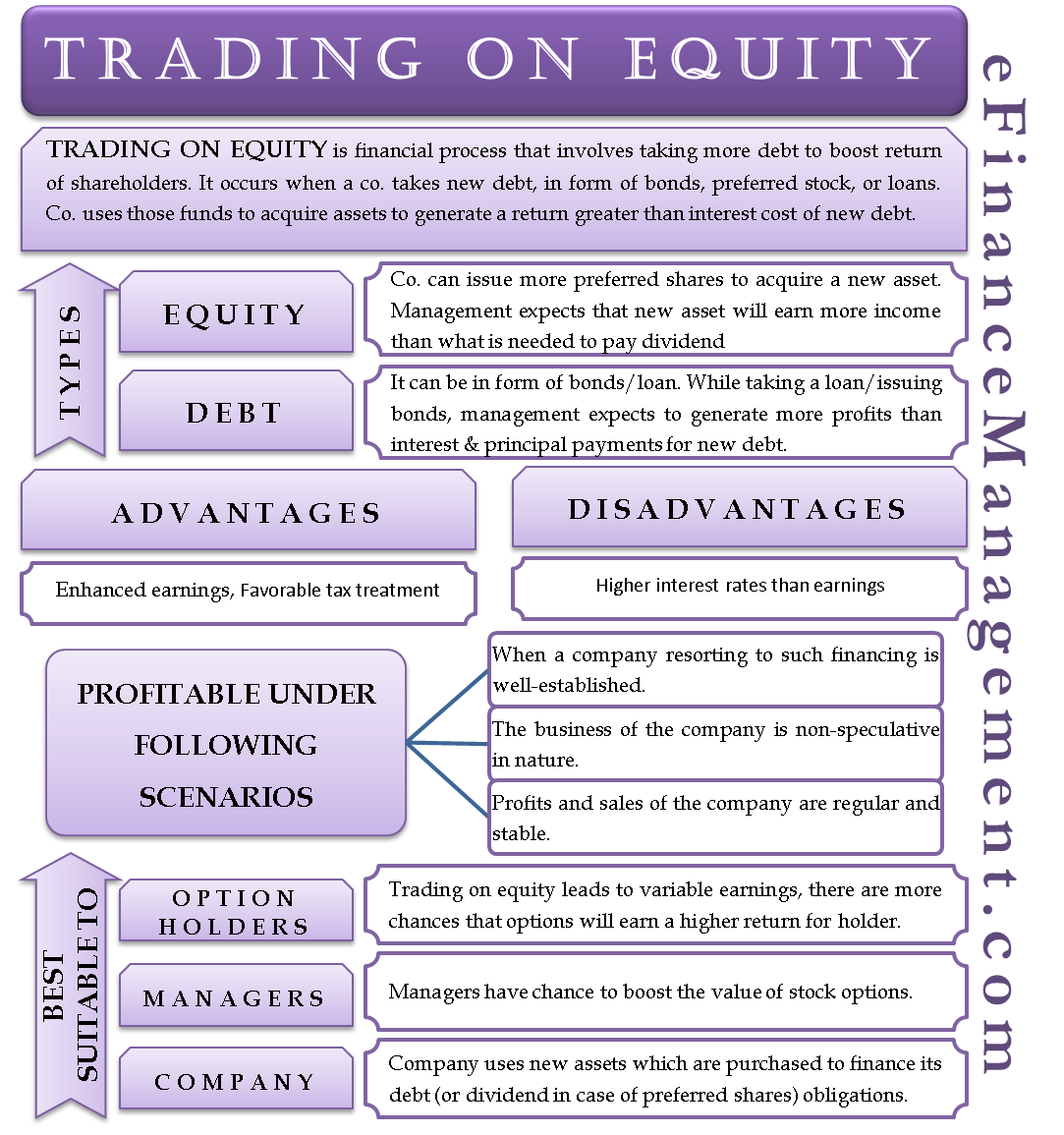
You can use also get a snapshot idea of profitability using return on average equity (ROAE). The shareholder equity ratio indicates how much of a company’s assets have been generated by issuing equity shares rather than by taking on debt. The lower the ratio result, the more debt a company has used to pay for its assets. It also shows how much shareholders might receive in the event that the company is forced into liquidation. For example, retail companies generally have higher asset turnover ratios because they sell products quickly and need fewer assets to generate sales.
Make your money work for you
Contrarily, a lower equity ratio may be a signal of high financial risk due to the higher proportion of debt in the firm’s capital structure. This is because a higher debt level puts the company under pressure to meet its debt obligations, possibly straining the company’s resources. From an investor’s perspective, this could mean decreased returns or even potential losses if the company is unable to meet its liabilities. A low equity ratio, typically below 50%, can signal higher financial leverage. This means the company is using more debt relative to its equity to finance its assets. While this can enhance returns on equity during periods of growth, it also increases the company’s vulnerability to economic fluctuations and interest rate changes.
Equity Ratio: Calculation, Interpretation, and Financial Impact

In contrast, if the company had total assets of $9,000,000 and shareholders’ equity of $2,250,000, the ratio would have come to be 4, which is very risky. Furthermore, an investor may derive and check other parameters to make the final decision. The asset to equity analysis establishes an equation between a firm’s total assets and shareholders’ equity. The type of industry a company operates in affects its asset turnover ratio. Different industries have varying levels of capital intensity, which directly impacts how assets are used to drive revenue. In light of these limitations, it becomes clear that while helpful, the equity ratio is not a standalone metric for a company’s financial health.
Sending you timely financial stories that you can bank on.
A company with high equity ratio might be seen as a less risky investment, as they are less subject to interest rates fluctuations and have fewer obligations to lenders. This might be more attractive to conservative investors who prioritize stability over high returns. The key to understanding the balance between the equity ratio and the debt ratio lies in how they interact with each other.
At the same time, a low equity ratio is considered a sign of higher risk since it indicates that the company predominantly borrowed money to buy its assets. Conversely, a higher equity ratio signifies efficiently funded asset requirements with little debt. The asset turnover ratio is a valuable financial metric that measures a company’s efficiency in using its assets to generate revenue. By understanding this ratio, you can gain insights into a company’s effectiveness in using its assets to drive sales. A sustainable equity ratio ensures financial stability, allowing companies to regularly allocate a portion of their capital towards these initiatives.
- On a broader level, the equity ratio provides a useful lookout for understanding a company’s risk tolerance and its potential for returns.
- In diving into the nuances of how the equity ratio impacts investment decisions, it’s important to note that investors often utilize this ratio as a crucial tool for risk evaluation.
- To figure the equity-to-asset ratio, simply divide the value of your equity by the value of your assets.
- This measure is vital as it shows the extent to which the company is dependent on borrowed funds.
Comparing Different Financial Planners
When a company’s equity ratio is less than 50% (i.e. debt ratio is higher than equity ratio), it is known as a leveraged firm. Conservative companies are considered less risky compared to leveraged companies. Leveraged companies pay more interest on loans while conservative companies pay more dividends to stockholders. Businesses are contractually required to pay fixed interest regardless of operating outcome – whether they earn income or not. However, the payment of dividends is dependent upon the company’s earnings and the board’s decision.
However, it’s also important to note that a high equity ratio isn’t always positive – it could indicate that a company isn’t leveraging borrowed money to accelerate growth. Discover how to calculate, interpret, and leverage the equity ratio to enhance financial decision-making and strategy. The significance or importance of the equity ratio analysis in the financial market is highlighted in the points average cost method formula calculator detailed below. Thus, the metric is a very strong source of information regarding the extent to which the business relies on equity as a source of capital compared to debt funding. A low level of debt means that shareholders are more likely to receive some repayment during a liquidation. However, there have been many cases in which the assets were exhausted before shareholders got a penny.
A simple way to look at a company’s debt obligations is to examine its equity-to-asset ratio, a measure that can tell you the extent of a company’s leverage. Read on to learn more about this means of judging a company’s financial fitness. The asset to equity ratio interpretation parallels the debt to equity ratio (D/E) and equity ratio. A lower D/E ratio is generally favored since it shows less debt on a company’s financials.
